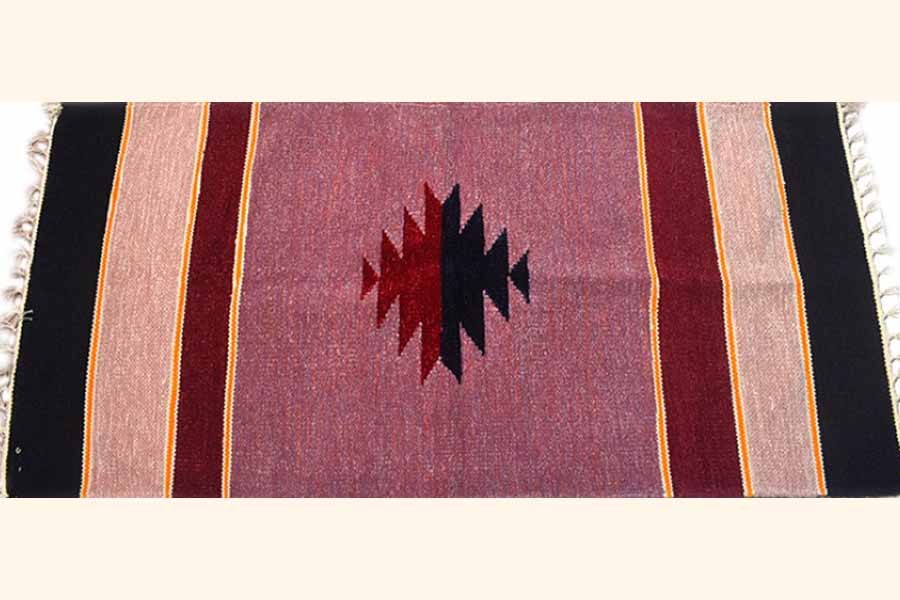RANGPUR, Oct 23: Shatranji (handcrafted rug), a heritage of Rangpur, has already conquered the heart of the people across the country as well as the abroad with its magnificent designs and enchanting beauty.
Shatranji is a kind of carpet. The word Shatranji comes from the Persian word Shatranj. Shatranj means chess board. The style of the chess game board matches the pattern of the Shatranji.
Shatranji is one of the oldest knitting industries in the present world. The traditional manually woven carpet which makes the beholders awestruck has a splendid history as well.
During Mughal days this thick-knit carpet was very much popular in the sub-continent. The emperors of that time had a great appreciation for it. Subsequently, the craft extended to this region in the thirteenth century. The rulers of the period were much fascinated by its unique designs and majestic beauty.
Emperor Akbar became captivated by the extraordinary artistic loveliness of the craft and used it to embellish his palace in New Delhi.
During the British period the colourful rug was manufactured in village Pirpur on the outskirts of the town. In 1830 district collector of Rangpur Mr. Nishbet became impressed to behold the extraordinary beauty of Shatranji. He arranged government patronisation for the weaver. Later the villagers named the village Nishbetganj after him. The village Nishbetganj in Rangpur Sadar upazila is well-known for Shatranji.
Afterwards, Bangladesh Small and Cottage Industries Corporation (BSCIC) undertook initiative to promote the handicraft. The organisation adopted a project to officially produce shatranji in 1976.
Subsequently, a number of enthusiastic people came forward and took initiatives for its manufacture and expansion. They engaged a good number of people in this industry. As a result, the production of shatranji increased to a great extent across the area. Most of the families of Nishbetganj area are involved in weaving the carpet and thus are getting financially benefited.
Presently, Shatranji is no longer confined to the Shatranji Palli at village Nisbetganj. It is now being produced in many areas in Rangpur. A good number of Shatranji factories have been set up in the district where thousands of men and women are working and thus they are earning their livelihood.
Sharmin Akhter (25), wife of Rubel Mia at Lahirirhat area in Rangpur Sadar upazila said that she was passing her days in acute poverty even three years ago. Her husband was a day-labourer.
It was very difficult for her to manage her family of five members with the paltry amount of income of her husband, said Sharmin.
Disappointed, Sharmin began to contemplate how she could salvage their impoverished family. Then she took training on knitting the craft. After receiving training for several months she started weaving the carpet and began to earn good money. Thus she found the way to contribute significantly to her family income. Like Sharmin thousands of poor women in the district have become financially solvent by knitting the craft Shatranji.
It is learnt, Shatranji is now being exported to some 40 countries of the world. And gradually its demand is on the increase.
A number of Shatranji factory owners said jute yarn is the main ingredient for weaving shatranji. It is used as a carpet on the floor. It is also used as Jainamaj, wallmat, tablemat and doormat. People use it mainly to decorate their houses. It has various designs such as women's faces, Shepherd, rural scenery, boat and landscapes. It has different sizes as well, they added.
The creative and skilled weavers are able to introduce something new and come up with elegant varieties of carpet which have high demand in different areas of the country as well as overseas, they added.
According to sources the craft has gained much popularity owing to the creativity of the local weavers. Shatranji Palli at Nishbetganj in Rangpur has already become renowned in the country for its unique and graceful products.


